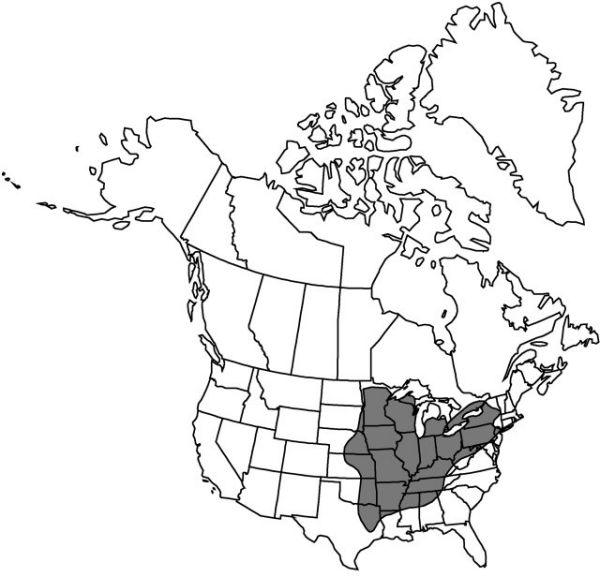Erythronium albidum
Gen. N. Amer. Pl. 1: 223. 1818.
Bulbs ovoid, 15–30 mm; stolons 1–3, mostly on 1-leaved, nonflowering plants; flowering plants reproducing vegetatively by offshoots or droppers. Leaves 8–22 cm; blade green, irregularly mottled, elliptic-lanceolate to ovatelanceolate or elliptic, ± flat, glaucous, margins entire. Scape 7–20 cm. Inflorescences 1-flowered. Flowers: tepals strongly reflexed at anthesis, white, tinged pink, blue, or lavender abaxially, with yellow adaxial spot at base, lanceolate, 22–40 mm, auricles absent; stamens 10–20 mm; filaments yellow, lanceolate; anthers yellow; pollen yellow; style white, 15–25 mm; stigma lobes recurving, 1.5 mm. Capsules held erect at maturity, obovoid, 10–22 mm, apex rounded to faintly apiculate or umbilicate. 2n = 44.
Phenology: Flowering spring.
Habitat: Mesic bottomlands, upland forests, woodlands, clay and silt bottomlands, floodplain forests
Elevation: 0–300 m
Distribution

Ont., Ala., Ark., Ga., Ill., Ind., Iowa, Kans., Ky., La., Md., Mich., Minn., Miss., Mo., Nebr., N.J., N.Y., Ohio, Okla., Pa., S.Dak., Tenn., Tex., Va., W.Va., Wis.
Discussion
Erythronium albidum often forms extensive colonies in which nonflowering, 1-leaved plants far outnumber flowering, 2-leaved ones. It is very widespread in eastern North America, more common in the central states than E. americanum and often occurs in slightly drier sites.
Selected References
None.
Lower Taxa
"broad" is not a number."thicker" is not a number.